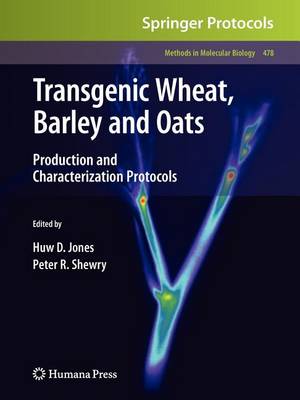Methods in Molecular Biology
1 primary work
Book 478
Transgenic Wheat, Barley and Oats
Published 11 November 2008
Understanding the physical and genetic structure of cereal genomes and how defined coding and non-coding regions interact with the environment to determine a phenotype are key to the future of plant breeding and agriculture. The production and characteri- tion of transgenic plants is a powerful reverse genetic strategy increasingly used in cereals research to ascribe function to defined DNA sequences. However, the techniques and resources required to conduct these investigations have, until recently, been difficult to achieve or totally lacking in wheat, barley and oat. This book brings together the l- est protocols for the transformation, regeneration and selection using both biolistic and Agrobacterium tumefaciens appropriate for these three species. It includes two chapters describing in vitro Agrobacterium co-cultivation, one leading to germ line transformation with no need for tissue culture-based regeneration. In addition, it has several chapters dedicated to the manipulation of gene expression and characterisation of the recombinant locus and transgenic plants. Finally, it tackles the issues of GM risk assessment, field trials and substantial equivalence in terms of transcriptomics, proteomics and metabolomics. Although this book is dedicated to the temperate small grain cereals wheat, barley and oats, many of the techniques described could be readily adapted for other cereals or plants generally. We thank all the contributing authors for their timely and informative chapters, the staff of Humana Press, especially John Walker for their guidance, and Helen Jenkins for her proof-reading, word processing and administrative support. v Contents Preface . . . . . . . . . . . . . . . . . . . . . . . . . . . . . . . . . . . . . . . . . . . . . . . . . . . . . . . . . . . . . v Contributors. . . . . . . . . . . . . . . . . . . . . . . . . . . . . . . . . . . . . . . . . . . . . . . . . . . . . . . . . ix PART I.
